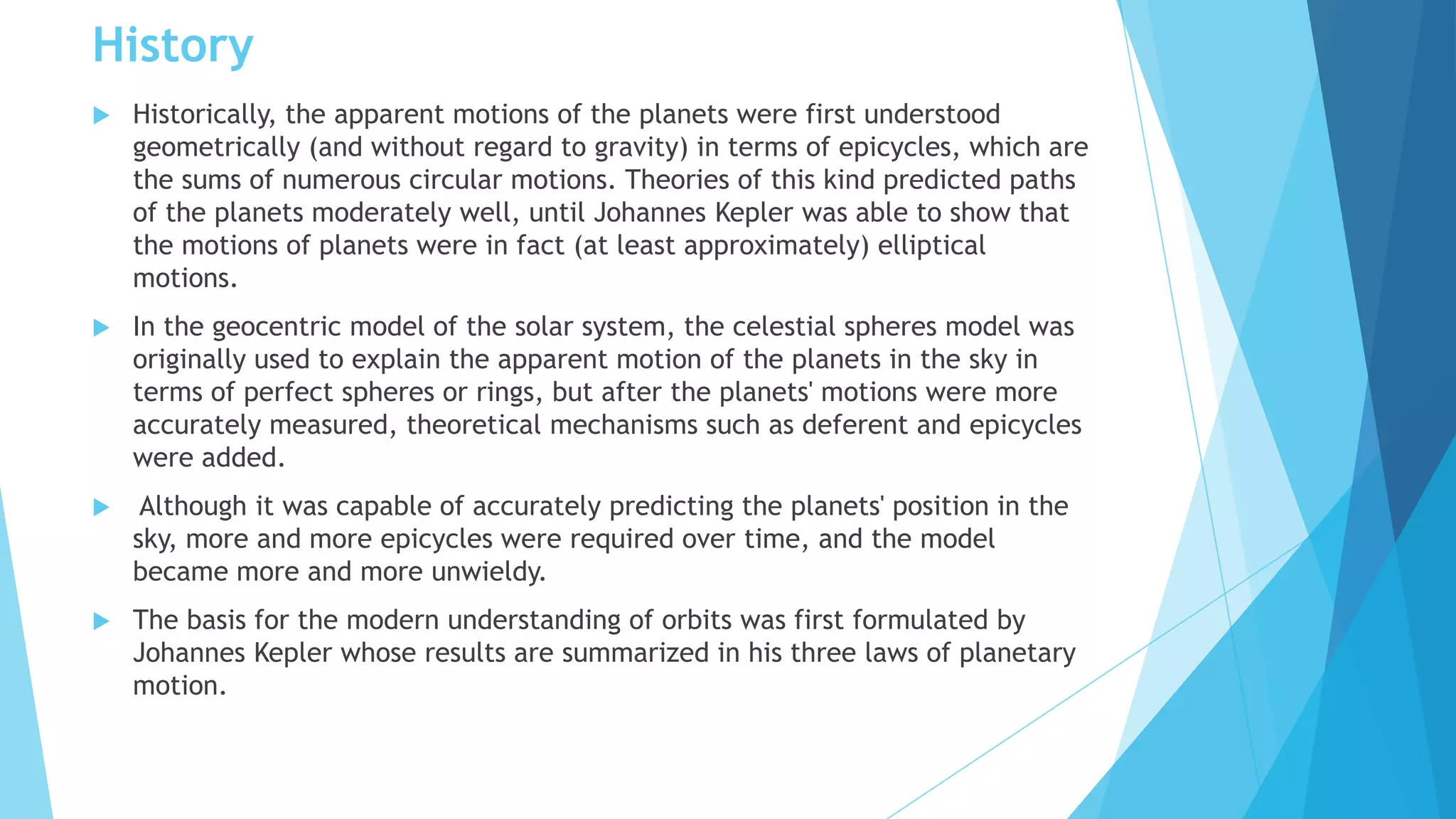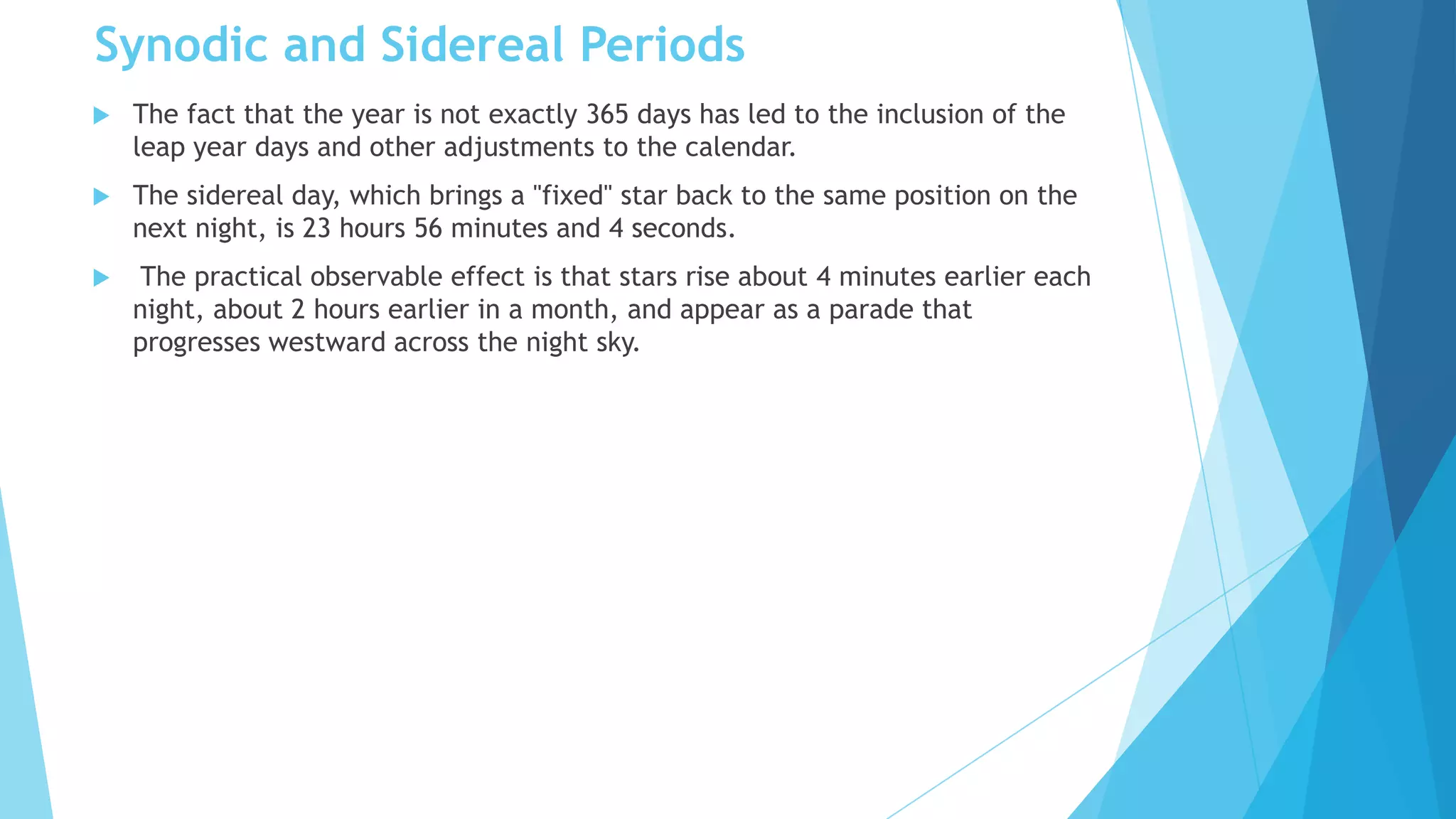The document discusses key concepts in geodetic astronomy including orbits, the celestial sphere, the ecliptic plane, and equinoxes and solstices. It provides historical context on how our understanding of orbits has developed from early geocentric models using epicycles to Kepler's elliptical model centered on the Sun. Kepler's laws established that planets follow elliptical rather than circular orbits, with speed dependent on distance from the Sun and a relationship between orbital properties and period.











